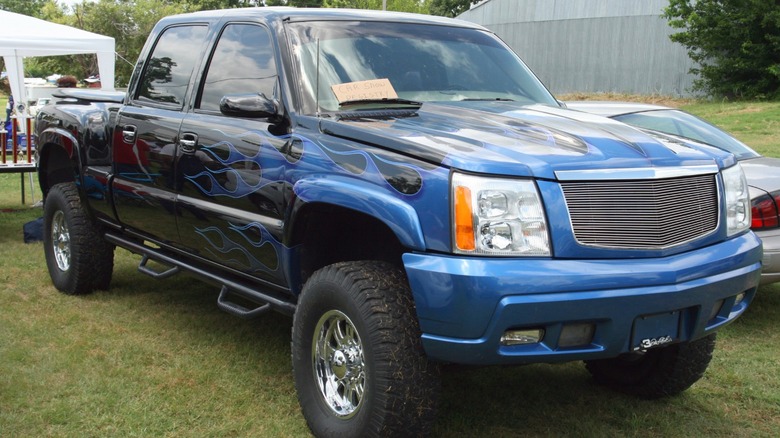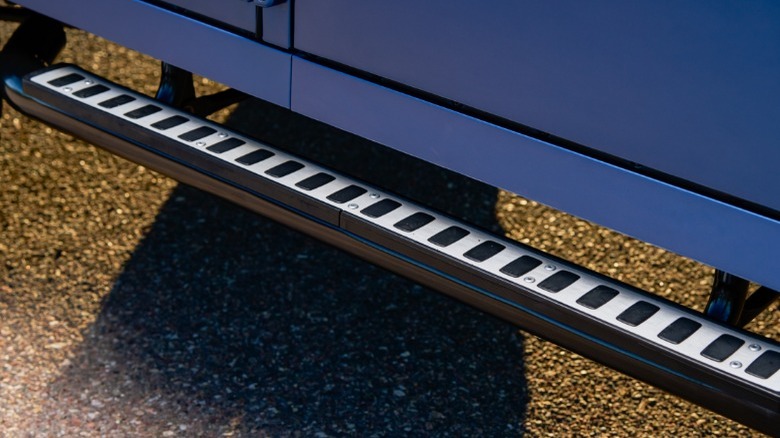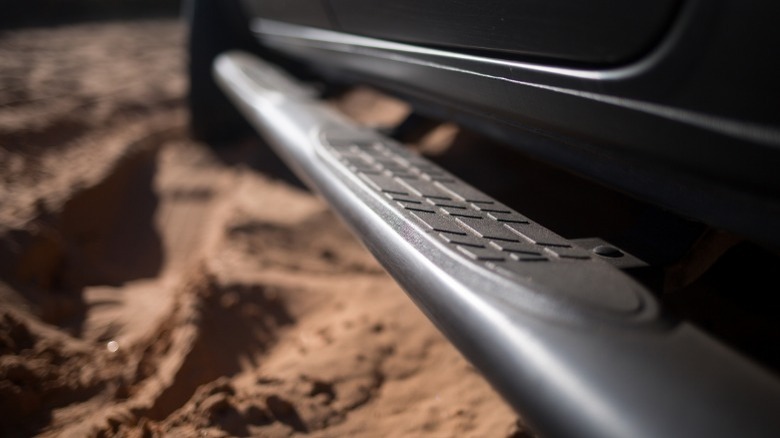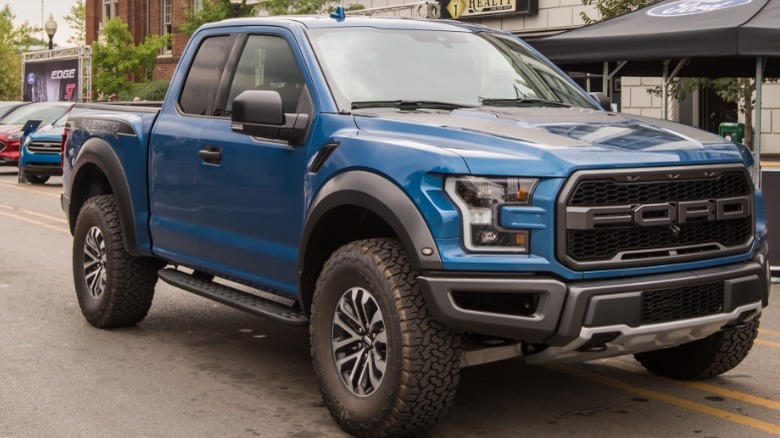Are Truck Running Boards Worth It And How Much Do They Cost To Install?
Running boards are popular upgrades for pickup trucks and SUVs. They're designed to help us climb into the cab more easily, as many SUVs and trucks sit significantly higher off the ground than do smaller vehicles like sedans, coupes, and vans. Running boards come in various designs and styles, ranging from basic flat platforms to tubular steps and even fully electric running boards that automatically and discretely retract when not in use. Regardless of the type of running board, the core purpose remains the same: to help drivers climb into their vehicles more easily.
When it comes to whether or not running boards are worth it, it really depends on you and your needs. They can be excellent upgrades for pickup truck and SUV owners. That's especially true for shorter drivers or anyone who owns a lifted vehicle. They can also be helpful for drivers with small children or anyone who has an injury or disability that hinders their movement. However, running boards also have their downsides. For one, some running boards can reduce your car's aerodynamics and lower your fuel mileage. Others are susceptible to the elements and may accumulate snow or ice during the winter, resulting in a slippery and dangerous surface. Finally, running boards can be pricey to purchase and install.
As you can see, there are many factors to consider before purchasing a set of truck running boards. Fortunately, we can help. As a former automotive repair technician who has installed numerous sets of running boards, I'll break down the ins and outs so you can understand the complete picture. Let's dive in and explore running boards in greater detail, including common types, whether they're worth it, and the installation costs.
What are the different types of truck running boards?
Before we dive deeper into how to decide whether or not running boards are worth it, it may be helpful to break down some of the most common types of running boards. Doing so will help you to better understand your options, and it may help you make your decision.
Standard running boards are one of the most common types you'll see on trucks and SUVs. They usually run the entire length of the vehicle's cab and feature wide platforms for stepping into the car. Traditional running boards usually have some form of grip on the top-side and average between 3- and 5-inches in width.
Nerf bars are another type of running board that you'll commonly encounter on trucks and SUVs. These devices are tubular shaped and feature flat sections with grip for climbing into the cab. Like standard running boards, nerf bars typically run the entire length of the vehicle's cab.
Side steps are another one of the most popular types of running boards. In contrast to nerf bars and traditional running boards, side steps do not run the length of the car's cab. Instead, as the name implies, side steps are small steps or platforms located beneath a vehicle's doors or below a truck bed. They may be tubular like nerf bars or flat like traditional running boards, and they typically have grip to help you climb into your cab safely.
Finally, there are electric running boards. These devices are often similar to traditional running boards, both in size and appearance, but feature an electric control module that allows them to descend and ascend automatically when you open and close your vehicle's doors. Electric running boards tend to be the most expensive option.
How much does it cost to install truck running boards?
Running boards can be pricey. Depending on the type of running board you purchase, you should expect to spend anywhere from $150 to upwards of $1,000 just to buy a set. The most expensive options will be electric running boards. Electric running boards will also usually come with the most expensive installation fees, thanks to the extra labor required to route wires and install any necessary electronics.
When it comes to paying to install running boards on your truck, prices will vary depending on the type of running boards you purchase, your vehicle, and the labor rates in your area. Generally, you should expect to pay between $75 and $500, and truck owners from around the country regularly report being quoted various numbers within that range.
Considering the upfront cost just to purchase a set of running boards, it's understandable that many drivers may balk at the installation fees. There is good news, though. Running boards are not particularly difficult to install. Many trucks and SUVs have pre-drilled holes in the frame rails. That means that installing a set of running boards may be as simple as bolting them on using those pre-drilled holes and the hardware that comes with the boards themselves. Even if your vehicle doesn't have pre-drilled holes, doing it yourself isn't overly complicated. If you're mechanically inclined or an avid DIYer, you could be able to save substantially by installing your own running boards.
So, are running boards worth it for you?
There are several factors to consider when determining whether running boards are worth it. One of the most important things to consider is whether you actually need them. Running boards can drastically reduce the stretching you must do to enter your car, and they can provide you with peace of mind and security, especially during inclement weather or low-light conditions when climbing into a tall vehicle is even harder. Running boards can also be helpful for older drivers or anyone who shuttles small children to and from school and other activities. Finally, many people simply like the way running boards look. If the bottom of your truck or SUV looks especially bare, running boards can be an efficient way to add some extra flare.
It's also worth remembering that running boards can come with a few downsides. Some running boards, particularly large traditional ones, can decrease your fuel mileage. They can also accumulate dirt, debris, and even snow and ice during the winter. If you frequently drive off-road, it's worth noting that running boards may lower your truck's clearance. You should also consider the purchase and installation costs, and you'll need to determine whether the utility that running boards provide will offset those upfront costs.
You should contemplate all of these factors before making your choice. Understanding your own needs, the needs of your passengers, and the ways you use your vehicle can go a long way toward helping you make the right decision and purchase.



